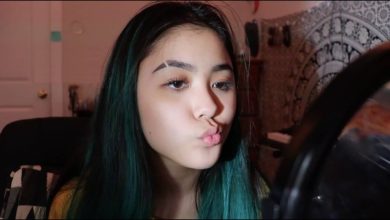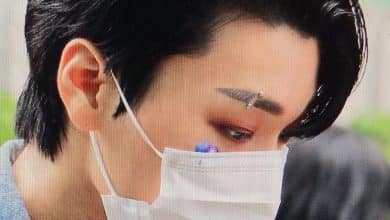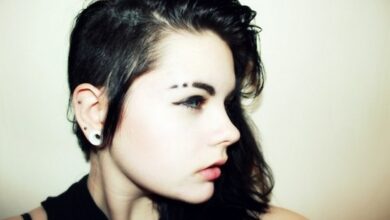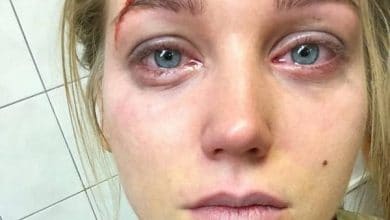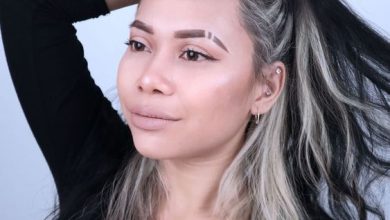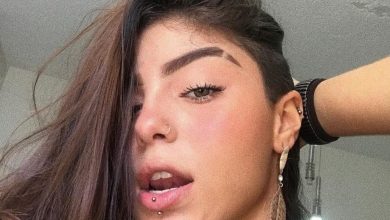Can you have eyebrow slit in the army?

Eyebrow slits are not specifically covered doesn’t mean they can’t say it’s an appearance issue, presents a professional appearance, and allows proper wear of headgear or other military assigned equipment. There is no minimum hair length, but a maximum bulk of four inches from the scalp. These regulations are enforced to allow proper use and fitting of headgear. Women are now allowed to wear their hair in a single ponytail or one to two braids, with the length not exceeding the top sleeve inseam at the under arm. Bangs or side-swiped hair may now touch either eyebrow, but may not cover the eyes. Longer hair is allowed to get pinned up so long as it is secured and does not extend upward on the head.
Can you have an eyebrow slit in the Marines?
U.S. soldiers stationed in Afghanistan and Iraq have become obsessed with groomed eyebrows, visiting the nearest barber shop for tweezing, traditional threading and unconfirmed rumors of waxing.

This new trend is raising eyebrows among older officers. For now, while there are rules about hair length, there aren’t really any about eyebrow shape, unless you’re in the Marine Corps, where excessive plucking or removing of eyebrows is not allowed… except for medical reasons.
Can I slit my eyebrow in the military?
These threadbare, waxed or shaved young soldiers prove disconcerting to an older generation of bushier warriors. Army regulations are silent on the subject of male eyebrows, except to say that the hair should not reach south.
In 2007, however, the Marine Corps added a line to its grooming regulations stating that “excessive plucking or removal of eyebrows is not authorized except for medical reasons.” The Marines have not settled the question of what constitutes excessive hair removal, although the Corps has made a half-hearted and circular attempt to define what would be considered eccentric and fashionable (bad) versus conservative and discreet (good).
Hair volume should not exceed approximately two inches. Volume is defined as the distance the hair mass extends beyond the scalp.
Hair coloring should be natural and blend with the individual. Fashionable styles and outrageous multi-colored hair are not permitted. The unique quality and texture of curly, kinky, wavy and straight hair is recognized, and in some cases it may be difficult to reach the 3/4 inch point at the back of the neck. In these cases, the hair should have a graduated look and may combine tapering with a line at the back of the neck.
Only one natural, narrow, front and back part (cut, trimmed or shaved) is allowed. Varied hairstyles, including afro, are permitted if such hairstyles meet the criteria of maximum length and volume, tapered neck and sides, and do not interfere with the proper wearing of military headgear. Braided hair is not to be worn in uniform or in service situations.
Sideburns must be neatly trimmed and fitted in the same manner as the haircut. Sideburns must not fall below a point at the middle of the ear, must be even in width (not flared), and must end in a cleanly shaven horizontal line. Muttonchops, ship’s captains or similar hairstyles are not permitted.
The face must be clean-shaven, unless the commander authorizes a waiver of shaving for medical reasons. Mustaches are permitted, but must be neatly trimmed and close. No part of the mustache shall extend beyond the lip line of the upper lip. It shall not extend beyond a horizontal line extending across the corners of the mouth and not more than 1/4 inch beyond a vertical line drawn from the corner of the mouth.
The length of an individual fully extended mustache hair shall not exceed approximately 1/2 inch. Handlebar mustaches, goatees, beards or eccentricities are not permitted. If a shaving waiver is authorized, no facial or neck hair shall be shaved, manicured, styled or drawn, or exceed 1/4 inch in length. Supervisors of individuals with a shaving waiver must actively monitor and ensure compliance with the treatment regimen.
Wigs or hairpieces may be worn by active duty personnel in uniform or on duty only for cosmetic reasons to cover natural baldness or physical disfigurement. Naval Reserve personnel on inactive duty for training may wear wigs. Wigs or hairpieces must be of good quality and fit properly, present a natural appearance, and conform to the grooming standards set forth in these regulations. They must not interfere with the performance of the service or present a safety hazard or a risk of foreign object damage (FOD).
Fingernails shall not extend beyond the fingertips. They must be kept clean.
Are eyebrow slits unprofessional?
Eyebrow slits are a way of trimming or shaping the eyebrows that is generally considered a trend. They have no formal meaning beyond being a style choice or a form of self-expression. Over the years, this look has been associated with gang affiliation or membership, but these days the general wear has no particular connotation. The main idea is to remove a small section – or, alternatively, cover it with makeup – to give the appearance of a slit or opening in the eyebrow. Some people choose a single slit, while others opt for a more striped look; slits can also be found in one or both eyebrows. They can be created in different ways, with different patterns. In most cases, the reasons why people choose this look are entirely personal. It is often considered trendy or “in” and can also help identify a person as a member of a specific group or team if all members choose to adopt this look. Sometimes people also use the slits to highlight eyebrow piercings. This look is usually immediately noticeable and often requires some maintenance work.

Are males allowed to have an eyebrow slit in the USAF?
It would likely fall under commanders discretion if they chose to make an issue out of it. Here I think is the most relevant quote from the updated version of the AFI.
Commander’s discretion may be used to determine if individual’s personal grooming is within standards of this instruction. The personal grooming standards listed are minimum standards that represent common appearance issues and are not all-inclusive.
In other words, just because eyebrow slits are not specifically covered doesn’t mean they can’t say it’s an appearance issue.
My take, probably best to avoid eyebrow slits if you don’t want to potentially make yourself a target. Is usually a regulation banning fashions that are part of a fad at commander’s discretion. You don’t want to skyline yourself and have your senior leadership know you for the wrong reasons.
Do eyebrows grow back if cut with scissors?
Hair size has no effect on hair growth. The speed and rate of growth of your eyebrows will not be affected by hair removal and they will grow as before. It will simply take a few weeks. Eyebrow plucking has no effect on the growth of eyebrow hair. Root hair removal, such as waxing, tweezing, etc., does not affect the growth of eyebrow hairs. They can grow back over time, as long as you don’t cut the roots. Prp and progesterone can help regrow eyebrows. It is recommended that you consult a hair growth expert. Some people have had their eyebrow hair cut off at the roots and it has not come back. You will know in 6 months, which is the longest cycle we know of.
What piercings are allowed in the Air Force?
Tattoos or markings on the head, neck, face, scalp and inside of the mouth are still prohibited under the Air Force’s new tattoo regulation for enlisted personnel and officers.
Air Force personnel are also not allowed to have visible piercings while in uniform. This includes ear, nose, tongue or any other body part that is not covered by or can be seen through clothing. The only exception is a small conservative earring per earlobe in gold, white pearl or silver for women. The earring must fit snugly and not extend beyond the earlobe. If your tattoo is on your hands, neck or face, find a location and make an appointment with one of our laser specialists.
Can You Have Eyebrow Slits In The Military?
Clearly, the runways aren’t the only place with an emphasis on perfect arches. According to an article in The Wall Street Journal, American male soldiers stationed in Afghanistan and Iraq are becoming obsessed with groomed brows, heading to the nearest barbershop for tweezing, traditional threading, and unconfirmed rumors of waxing.

Many of them discovered the benefits of professional brow-grooming by accident—one soldier went in for threading just to get rid of an unwanted unibrow and ending up liking the distinct shape. He now goes in for touch-ups back at his squadron’s base in Hawaii. “I tell them, ‘Don’t make me look like a girl,'” the sergeant told The Wall Street Journal. Another private went in for a haircut and a shave at an Afghan barber shop not realizing until it was too late that the barber had sculpted his brows using a straight-edge razor.
Conclusion
Serving in the Army requires a clean and well-groomed appearance, but the freedom you’ll have to express your individuality may surprise you. While there are rules in place to ensure your safety and general uniformity among Soldiers, other restrictions have been modified to respect religious and personal expression.


